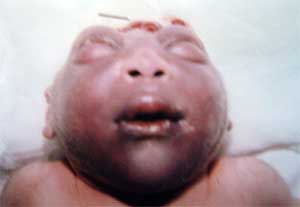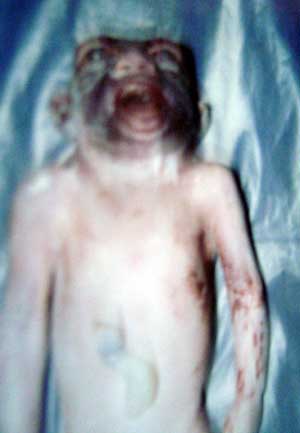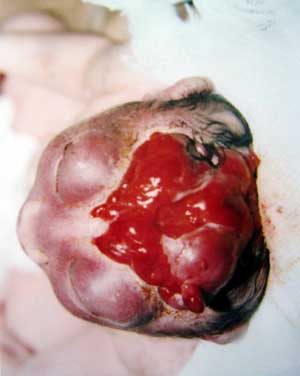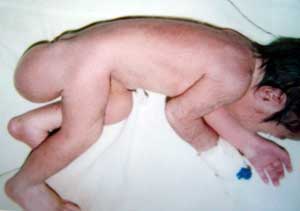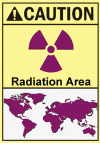
INTRODUCTION
The Nuclear Reader was written
with the intention of bringing into focus information known and unknown
which surrounds the use of nuclear energy.........
Chapter
1. Hazards of Low Level Radioactivity
This chapter discusses some
of the Many hazards of low level radioactivity.
Chapter
2. Nuclear Power is Bad Business
This chapter dispells the
myth that nuclear power is economically viable.
Chapter
3. The Petkau Effect
This chapter explains the
health damaging effect of low-dose radioactivity.
Chapter
4. Health Damage from Radioactivity
This chapter clarifies that
there is no safe dose of radiation.
Chapter
5. References
Medical literature on radiation
health damage.
Chapter
6. Depleted Uranium
This chapter looks at depleted
uranium as a part of the nuclear energy cycle with attention to military
uses.
Chapter 7. Photos of Radiation
Damage
This chapter contains photos
of plant deformities and infant deformaties.
Chapter
8. Radioactive Waste
This chapter discusses the
fact that there is no plan for long term storage of radioactive waste.
Chapter
9. Toward Clean Energy
Thsi chapter explores clean
renewable energy sources.
Email: NuclearReader at gmail.com
PART ONE: RADIATION DAMAGE TO PLANTS
One of the characteristics of plants is that they respond to radioactivity more quickly than animals and humans.
Plants are similar to the canary in the coal mine.
Plants react more sensitively to air pollutants because they use the carbon in the air for their nutrition. The amount of carbon in the air is .035%, so the plant must take in a lot of air to fill their nutrient needs. By comparison, the oxygen which humans and animals utilize makes up approximately 21% of the atmosphere. We do not require as much aeration and thus take in less of the ambient toxic pollutants.
The following excerpt from The Petkau Effect explains this phenomena.
"We now have proof of the risk of interrupting the very basis of the life cycle of plants, animals and man - in brief, photosynthesis on Earth is endangered!"There is a fundamental difference between plants and animals, and this determines why plants are so much more sensitive to air pollution. We animals need air for its oxygen, to burn our food so as to obtain energy. The plant, however, gets almost all of its nutrition in the form of carbon, which is contained in the air in the form of carbonic acid (C02) and is made available to the plant through the process of photosynthesis. The plant must take in MUCH more air than animals to get enough carbon, because air only contains .035 percent carbonic acid. Air contains 21% oxygen.
"The prodigious aeration of the plants explains their tremendous sensitivity to air pollution. The toxic effects of airborn pollutants show up earlier in plants than in the human.
"Carbon 14 is produced by cosmic rays, bomb tests and nuclear power plants.
By 1963, Carbon 14 in the Northern Hemisphere had increased by 100 percent, and by 1984, about one decade later, it had increased another 25 percent. An increase in radioactivity of only one percent eventually translates into a decline in tree growth of about 18 percent. It is interesting to note that a global increase of Carbon 14 - one such as has never before been seen - parallels the slowing growth and the endemic death of trees from Lebanon to the Himalayas."This is why we must give immediate priority to clarifying the influence of
radioactivity in our environment."
From The Petkau Effect (R Graeub Editions D'En Bas, Lausanne, Switzerland, 1988)James E. Gunckel is the world authority on modifications of plant growth and development induced by ionizing radiations. He researched this topic for 34 years at the Brookhaven National Laboratory and at Rutgers University. The Three Mile Island (TMI) nuclear power plant accident in 1979 caused many health problems in the area, and there were also plant anomalies. Mary Stamos, a local resident, has photographed deformed plants and flowers starting a few months after the accident. She took some of these plants to James Gunckel for his opinion and he wrote in an affidavit dated May 11 1984:
I have carefully examined a few specimens of common plants collected shortly after the accident at TMI and compared them with specimens collected more recently. The current abnormalities are probably carried forward by induced chromosomal aberrations. There are a number of anomalies entirely comparable to those induced by ionizing radiation stem fasciations, growth stimulation, induction of extra vegetative buds and stem tumors.Mary Stamos who lived 6 miles from the TMI plant observed in a report she wrote (Personal Experiences and Observations of Plant Growth Abnormalities in Northwest Quadrant of Three Mile Island 1/14/85):
We have found people, animal and plant effects in the same areas where symptoms were reported at the time of the TMI nuclear accident...as of 2007 mutations, modifications and abnormalities of flora have been found beyond the 25 miles radius of Three Mile Island.
The following is a series of photos of deformed plants,
flowers and animals taken in the area, with comments by the photographer
Mary Stamos.
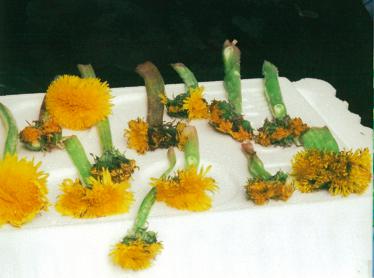
Dandelion 2010 |
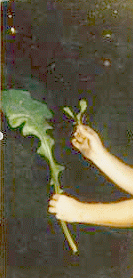
3 foot long dandelion leaf |
Dandelions showing a few small normal flowers and also the abnormal multiple flowered wide and hollow stems. The pinkish color may indicate radiation exposure. Found in my neighborhood in the spring of 2010. I was actually stunned to find so many at one location.
Three clumps of dandelions found in 1984, each about
3 feet long.
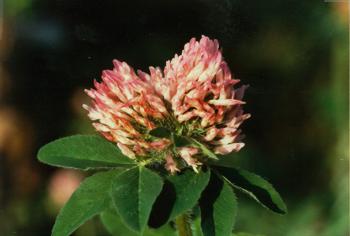 |
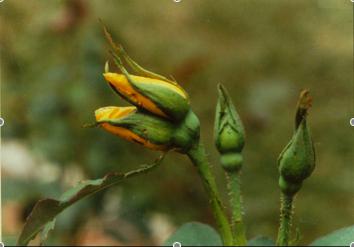 |
|
|
|
|
|
|
 |
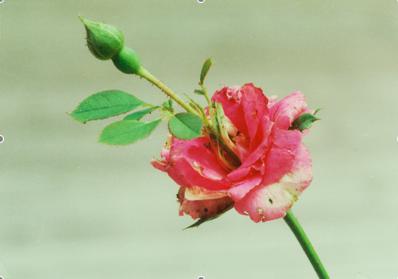 |
|
|
where pistol should be |
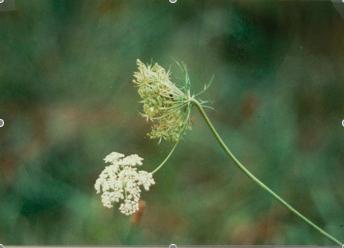 |
|
|
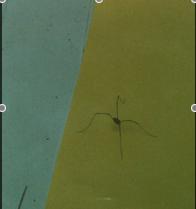
Four legged daddy long legs on my deck; many spiders disappeared as well as tiny hop toads and the bumble bees |
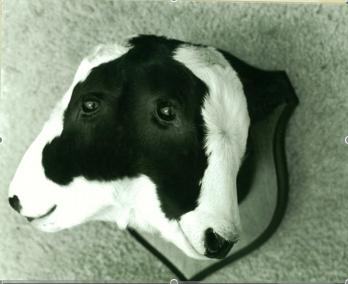 |
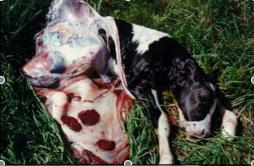 |
|
|
|
I saw all these effects on local plants but thought at first it was caused by a virus or f ungus. Further research led me to understand it was the radiation release from the Three Mile Island accident.
Maple trees on both sides of the Susquehanna River had deformed or mis-colored leaves. The zucchini squash grew double.
I had no bumble trees for almost 10 years.
* * * * * * * * * * * * * * * * *
PART TWO: RADIATION DAMAGE TO HUMANS
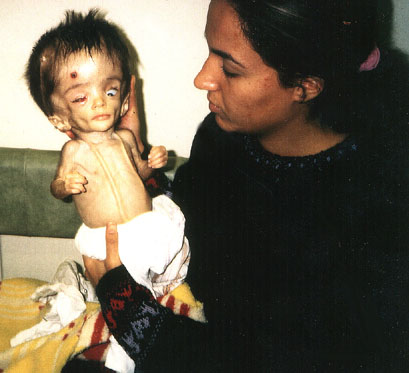 |
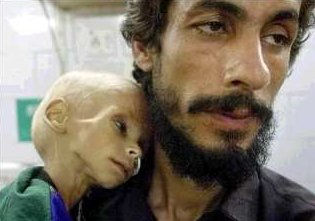 |
Deformities also manifest in infants. Depleted uranium is used to harden and give extra power to missiles and bullets. The dust has caused birth defects in Iraqi babies and in babies born to American soldiers. DU causes genetic damage for generations. See chapter 6 for discussion of depleted uranium and its far reaching damage. Following are photos of deformities related to exposure to depleted uranium.
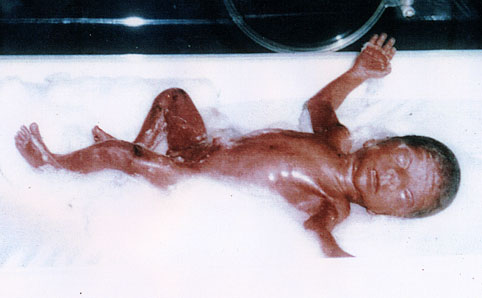
 |
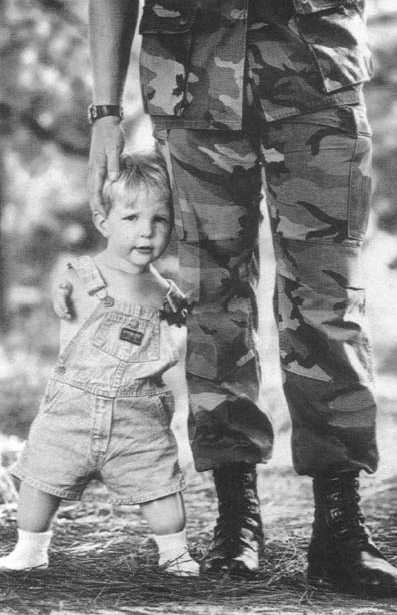 |
|
REFERENCES
Publications of James E. Gunckel:
The Effects of Ionizing Radiation on Plants: Morphological
Effects, The Quarterly Review of Biology,
Vol. 23, no. 1, March 1957
Modifications of Plant Growth and Development Induced by Ionizing Radiations, Encyclopedia of Plant Physiology, Vol. XV/2, 1965
Aberrant Growth in Plants Induced by Ionizing Radiation, with Arnold H. Sparrow, Abnormal and Pathological Plant Growth, Brookhaven Symposia in Biology No. 6, 1954
Ionizing Radiations: Biochemical, Physiological
and Morphological Aspects of their Effects on Plants, with A.H. Sparrow,
Encyclopedia
of Plant Physiology, Vol. XVI, 1961
For more information on DU:
An Important video, long but good, of Doug Rokke, a US Army Contractor who headed a clean up of DU in Iraq and developed serious health problems and Leuren Moret a geoscientist, whistle blower at Lawrence Livermore Laboratory and others.
www.mindfully.org/Nucs/2003/Rokke-Depleted-Uranium-DU21apr03.htm
Video
Look for video titled 'The Doctors, the Depleted Uranium
and the Deformed Children'
www.video.google.com
Slideshow:
The Chernobyl Legacy slideshow of sick and deformed children from the area of the Chernobyl disaster. Commentary by the photographer Paul Fusco. A must see wake up call!
My first impression was that I was looking at a different race of people, because the damage was so incredible. - Paul Fusco, in his essay on Chernobylhttp://inmotion.magnumphotos.com/essay/Chernobyl
The photos included in these pages were selected from:
Photos of babies deformed at birth as a result of exposure to depleted uranium. The deformities are severe and horrible to look at. Yet they have become a fact of life wherever DU is used.
http://www.mindfully.org/Nucs/2003/DU-Baby2003.htm
Photos showing typical damage to babies exposed to depleted uranium.
http://mindprod.com/politics/iraqdubabiespix.html
If humanity does not opt for integrity we are through completely. It is absolutely touch and go. Each of us could make a difference.
